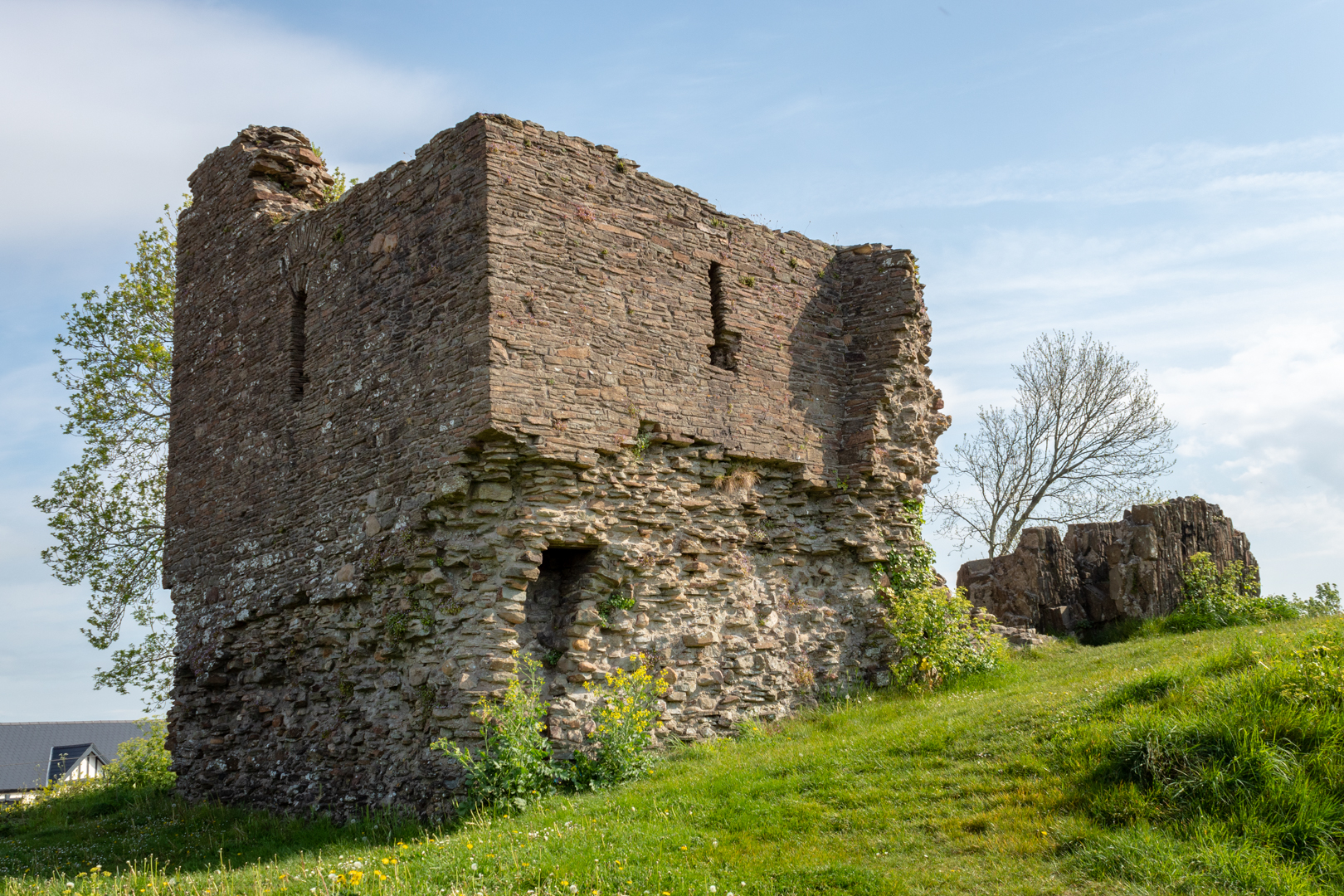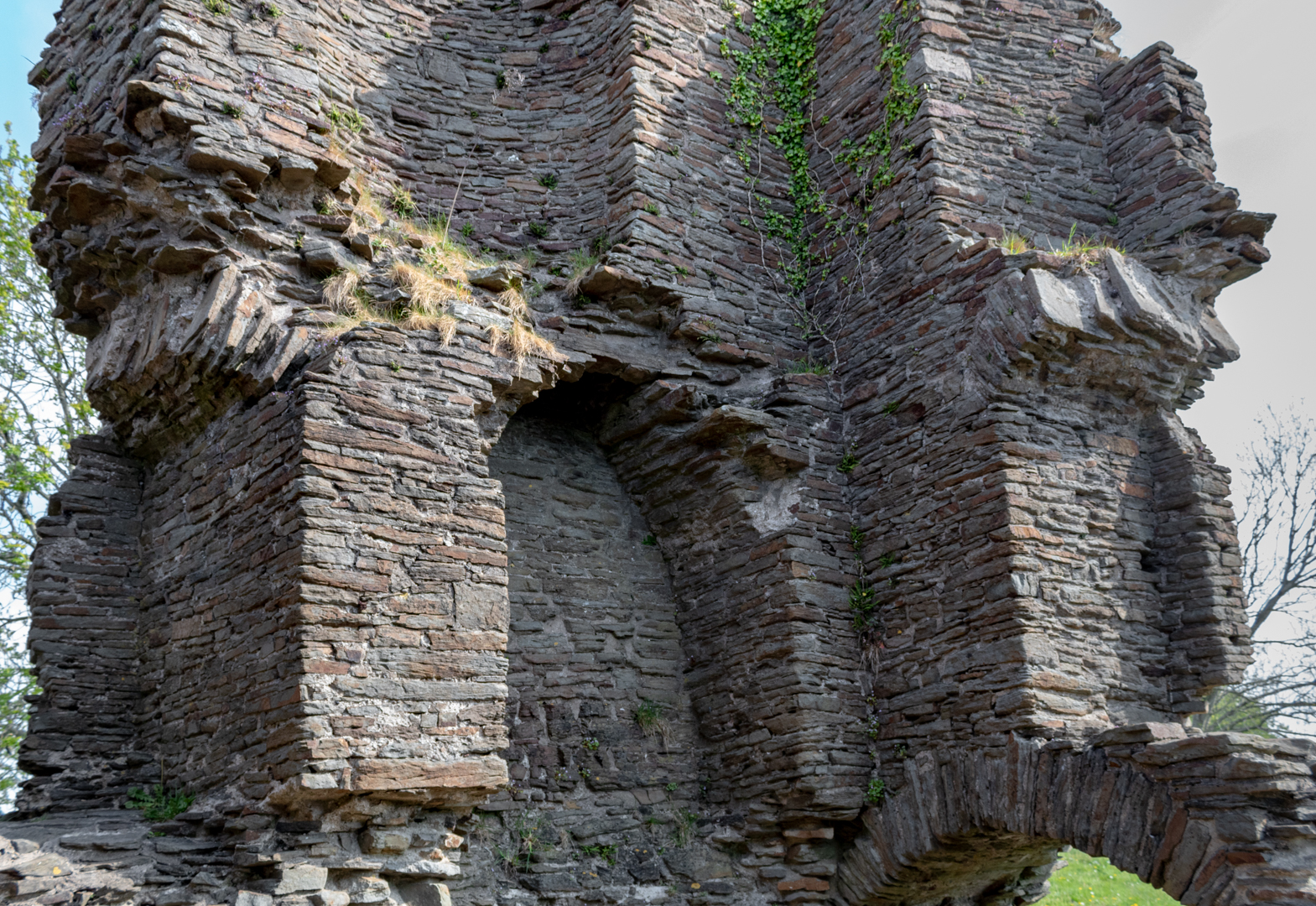Visit Date May 2022..
Loughor Castle is situated in a strategic location on the north of the Gower coast and the site has a long history.
By 1116, an oval ringwork castle existed on top of the earlier fort.
At this time the castle and its defences would have been wooden structures.

Its history starts in around 75 AD when the Romans built a fort on the site then known as Leucarum, which took its name from the Celtic name for the River Loughor (in Welsh, Llwchwr; Leucara, in Latin).
It was used as a military fort intermittently until the 5th century when it was abandoned.
When the invasion of the Normans spread to Wales in the late 1060's they occupied the fort and as in many cases in Wales rebuilt their settlements on the older Roman sites.
Early in the 12th century, the Normans extended their control over southern Wales and the Earl of Warwick, Henry de Beaumont, became the area's overlord after he had been given the Gower Peninsula by Henry the first.
At this time the castle and its defences would have been wooden structures.
In 1151, the Welsh attacked Loughor Castle and burned it. Curiously scorched Norman chess pieces, possibly dating to this event, have been unearthed at the site.
The Normans once again took charge of the castle and the first of the stone structures of the castles were constructed.
In 1203 King John Gave the castle to his ally William de Braose; William was a powerful Marcher Lord.
The rectangular stone tower that now dominates the site was constructed.
Though greatly ruined, the two-storied tower retains enough of its original structure to give a fairly complete picture of how it was used.
The fireplaces, fine windows, and garderobe (latrine chute) suggest that the tower was residential, perhaps housing the lord of the castle and his household.
William allied himself with the Welsh prince Llywelyn the Great and war broke out. William died in 1211, but his son, Reginald, continued fighting and married Gwladus, Llywelyn's daughter.
In 1215, the castle was captured by Llywelyn's forces and control of Gower was granted to Reginald.
Two years later, however, Reginald made peace with the English Crown and Llywelyn removed him from power, replacing him with the Welsh prince Rhys Gryg.
Llywelyn married another of his daughters, Margaret, to Reginald's nephew, John de Braose, and in 1220 Llywelyn gave him Gower and Loughor Castle,

In 1232 the castle was inherited by John's son, William de Braose, and in turn his son, also called William. In the second half of the century, Wales saw a renewal of fighting, and the castle was attacked again in 1251 which lead to the stone defences being improved once again.
In 1302, William de Braose granted the Loughor estate to his seneschal, John Yweyn, for life in exchange it is said for an annual fee of a greyhound collar.
On John Yweyn's death in 1322 the lands were seized by John de Mowbray, William's son-in-law he was executed later the same year however for taking part in a rebellion.
Edward fell from power in 1327, and the Loughor lands were granted to John de Mowbray's son, John.
This was the last of the importance of the castle and its condition started to deteriorate, For a few hundred years the site continued to fall into ruin then in the 1940's the main tower of the building collapsed and the ruin was left as it can be seen now.
Although not much is left of this historic place there is enough to warrant a short visit to this historic place which is close to the beautiful Loughor Estuary.
Footer:
Visit Information:-
Google Reference
51.66219879408081, -4.077424328580057
Search term
Loughor Castle.
What Three Words reference:-
///declining.fatigued.romance
Additional information.
Visiting is really easy as the castle is located alongside the main A4240 road in the village.
You may be able to park on the road however, there is a small car park (free) close by (51.66332518930001, -4.078047165998971).
It is a short walk 5 mins from here to the castle and you will also be rewarded by great views of the river and the estuary from here.
Thank you for visiting this blog.
If you would like more information on this location please feel free to contact me.










Great stuff, really enjoyed reading the history while perusing the photos.
ReplyDeleteGreat pictures David
ReplyDelete